Affairs: Reportage / Syria
Forbidden cities
In Damascus, there are places that appear untouched by Syria’s civil war. But in cities such as Aleppo and Homs, the destruction is overwhelming. Among the rubble, people try to patch up homes and lives – and long for a return to normality.
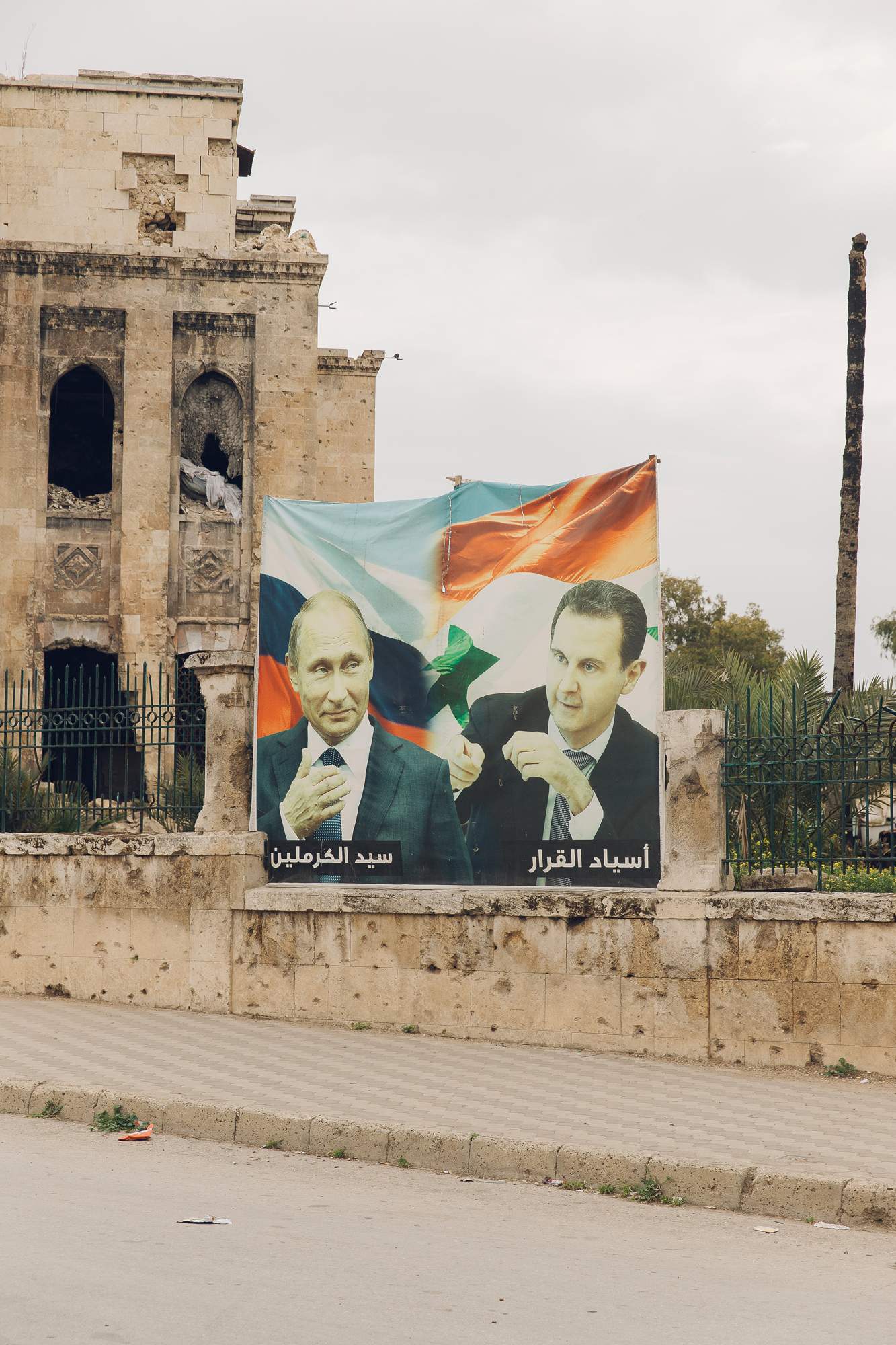
Propaganda in Aleppo showing Vladimir Putin (on left) and Bashar al-Assad
It’s a bumpy ride over Mount Lebanon to the Masnaa crossing, the gateway to Syria. The strip-lit border office is a rather mundane-looking entry point to a country that holds such mystique. Waiting for the guard to return from a cigarette break, an eastern European tourist pulls my sleeve and says, “He really is everywhere, isn’t he?” While hagiographic leader portraits are commonplace in authoritarian countries, beady-eyed Bashar al-Assad seems to stare down from every wall in Syria – in buildings, checkpoints and bathrooms. “Don’t talk about that in here,” says someone else in the queue. If Assad’s eyes are everywhere, so, in all likelihood, are his ears.
Weekenders once made the two-hour dash from Beirut to Damascus for shopping trips and hammam breaks but since Syria’s bloody civil war began in 2011, crossing the border has become an increasingly laborious and, for those trying to flee to Lebanon, risky process. After an anxious wait in the heat of late morning, we drive on to the Syrian capital, arriving just as market stalls are springing to life. The conflict has left the old city mostly untouched. We drag our luggage down winding lanes before reaching a stone arch, through which is the Talisman Hotel, the Damascene idyll that travellers have dreamed of for centuries. In its central courtyard, the sun beats down on a stone basin surrounded by traditional wrought-iron tables. Every corner contains lush bougainvillaea and orange-blossom trees haloed with dancing butterflies. Through heavy wooden doors leading to airy bedrooms, a treasure trove of furnishings inlaid with mother of pearl awaits.
In old Damascus, every ornate doorway and carved wooden balcony window is a discovery. Continuously inhabited for more than 12,000 years, this city has been rebuilt time and again, as we discover in the ancient House of St Ananias, which lies at the Roman street level some three metres beneath today’s well-trodden pavements. The centre of the tranquil old city retains a community that has held itself together with a commitment to its daily rituals. Breakfast pastries laden with juicy meat soaked in pomegranate molasses are stacked on wooden boards in front of stone ovens known as afran. On the lush, tree-lined main boulevard, couples walk hand in hand as they survey the traders’ wares: beaded chandeliers, embossed brass trays and wooden-inlay mirrors are piled high. Many of the antiques on sale come from abandoned homes but few of those left behind have the money to buy them.

Damascus’s Old Town

Rugged landscape
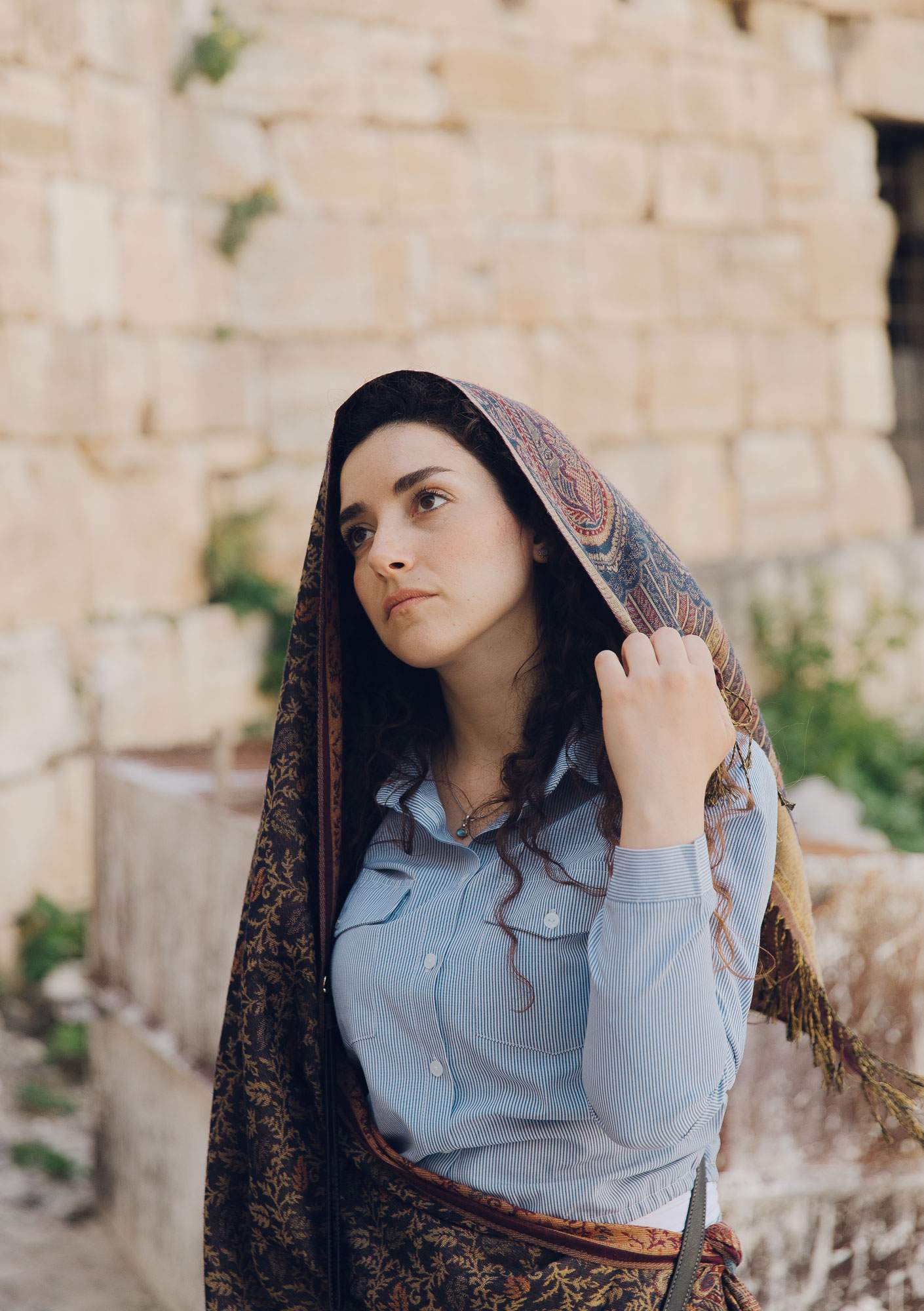
Guide Arwa Haddad
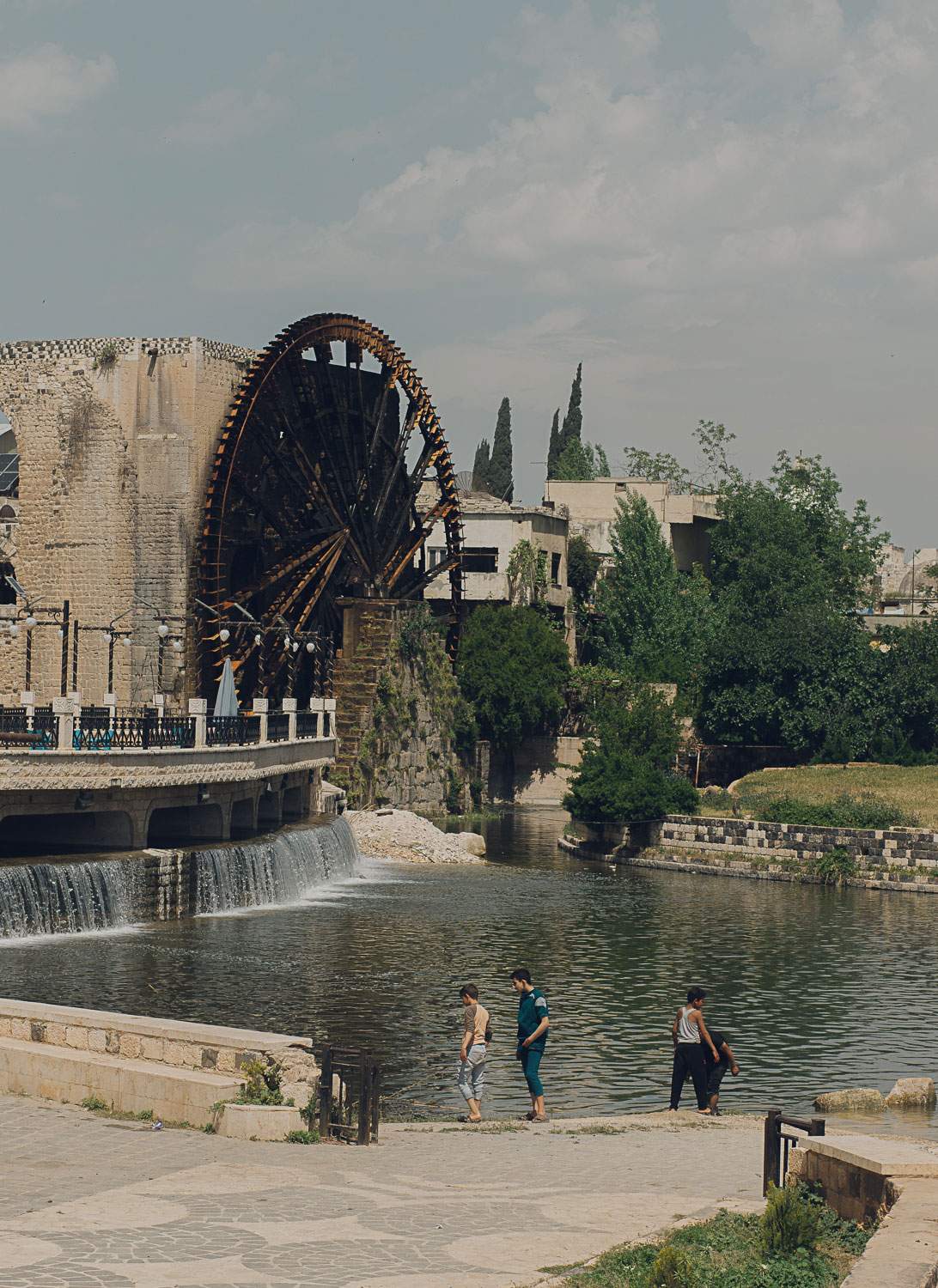
Norias of Hama
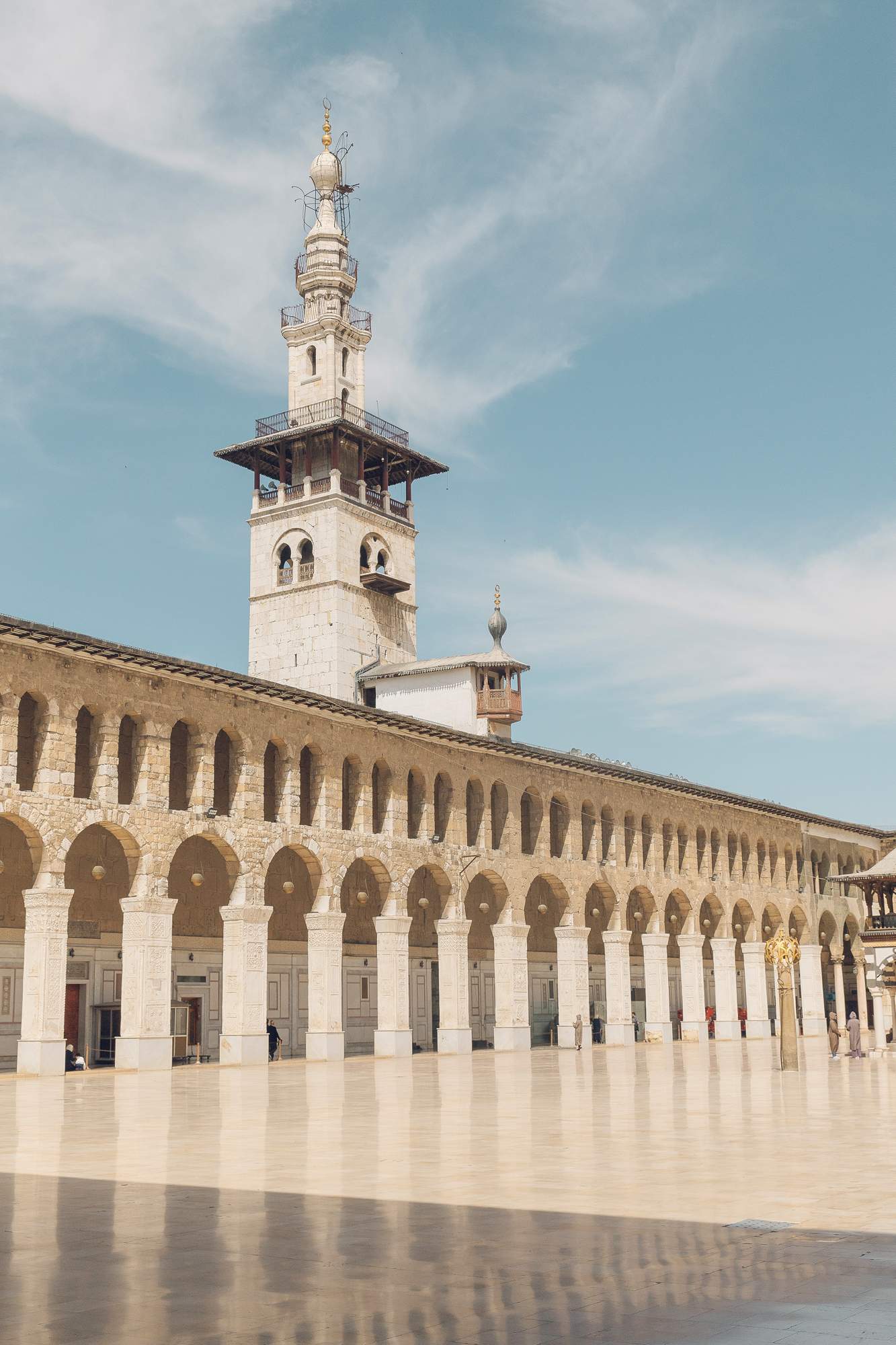
Umayyad Mosque
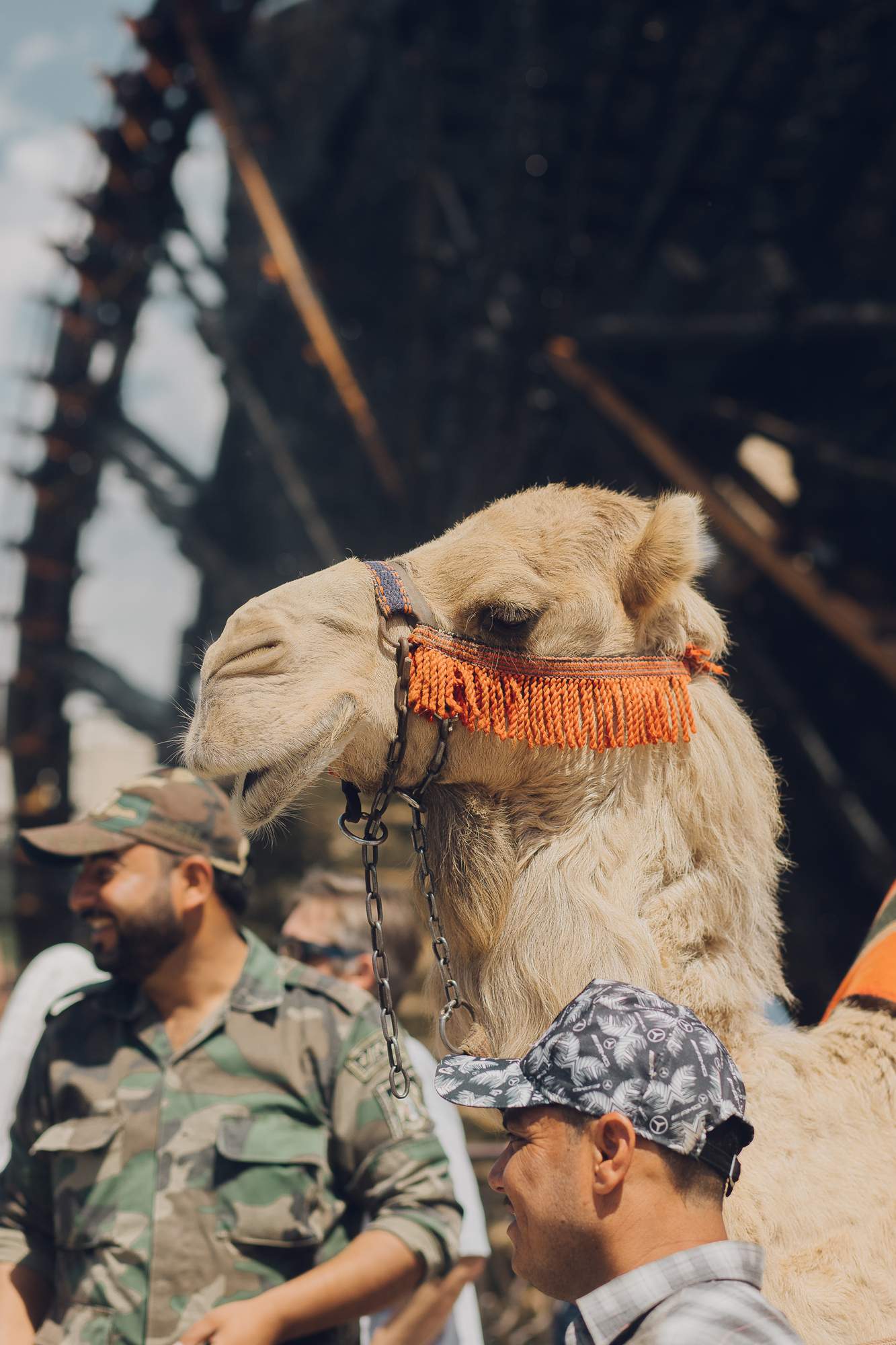
Camel and camo
Arwa Haddad moved from Homs to Damascus to pursue a career as a tour guide. “The look on your face when you see every beautiful and surprising corner of this city – that was the look on my face when I first came here too,” she says. “That’s why I want to do this job: to show everyone my country that I love so much.” Haddad is one of a crop of fresh-faced Syrian tour guides in training, hoping to reveal a different side of their war-torn home. With so few opportunities for young people to work, they’re counting on tourism to help them build a future for themselves. Guide-turned-entrepreneur Fadi Assi is the man behind the project. His career began in 1997. Business was booming, with about 8.5 million tourists coming to Syria every year; 2010 was the busiest year yet. After the protests and brutal government response in early 2011, however, a packed schedule of bookings suddenly cleared.
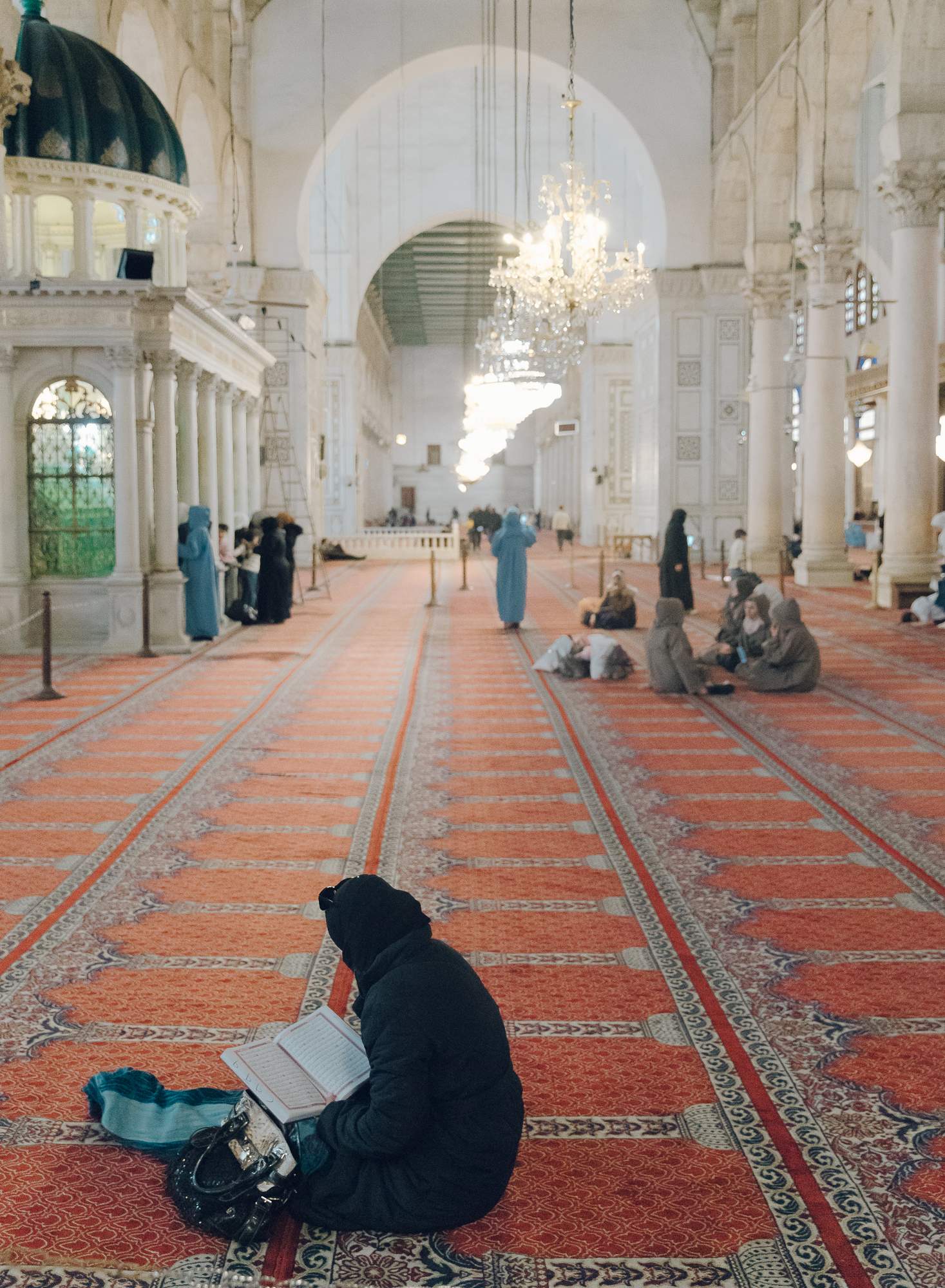
Last days of Ramadan in Umayyad Mosque
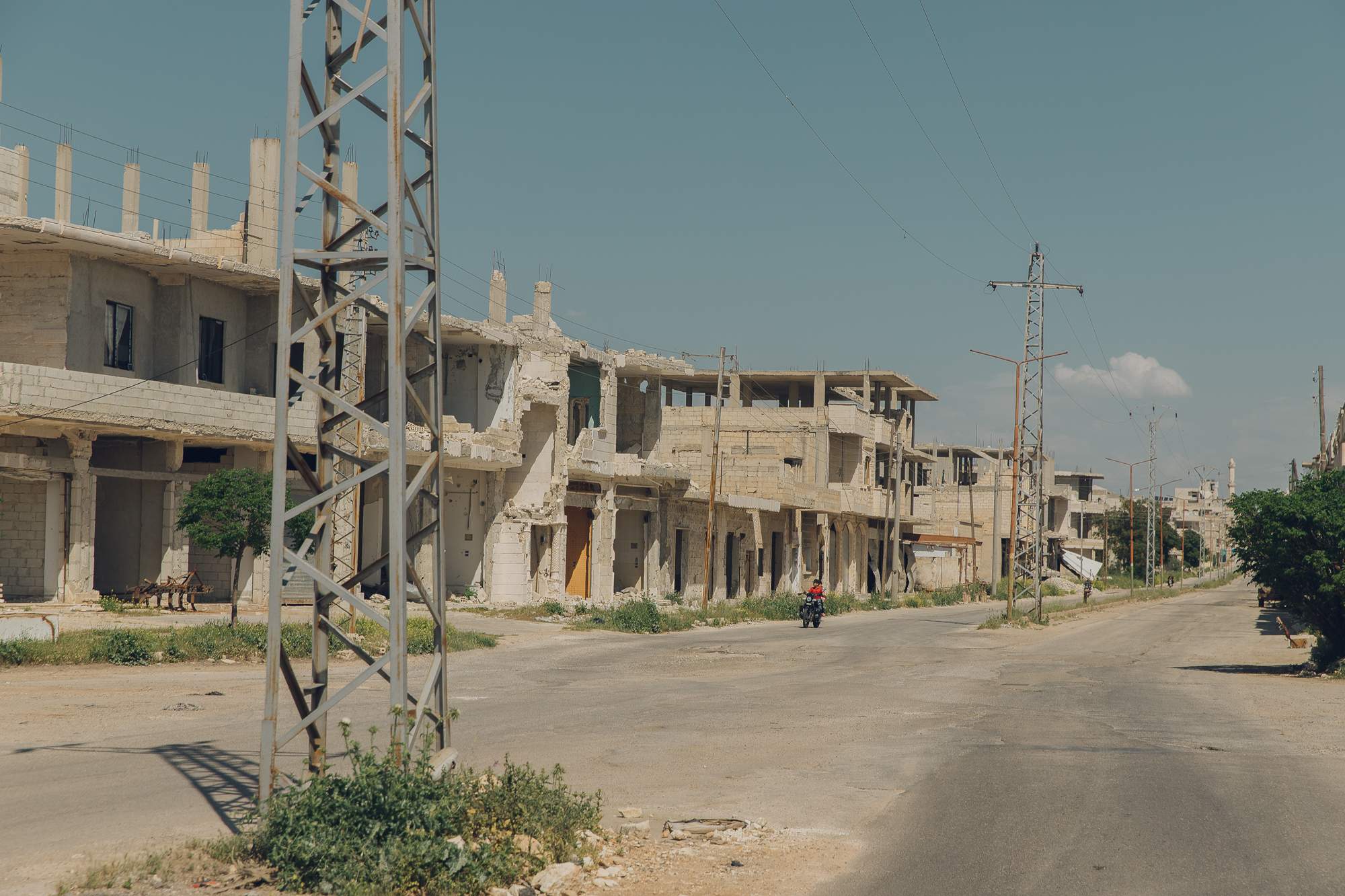
War-damaged buildings between Hama and Aleppo
With no visitors, Assi switched to working in oilfields. Kidnapped on four occasions by militant groups during the period of lawless violence that erupted in northern Syria in 2012, he did what he could to earn an income. When relative security returned in 2019, Assi decided that the time was right to bring tourists back but on his own terms. “It’s a new Syria and the kind of people who want to visit are different too,” he says. “Tourists who come here now don’t want a history lesson. They want to see our life and our culture, and share our joys and struggles.”
Assi set about recruiting young people, who he believes are more open-minded after all that they have endured in their lives. He has seen his booking enquiries triple in the past year and is never off the phone, always driving back and forth from the border to collect his charges. The first and only guide to succeed in securing visas for Americans since 2011, he is in high demand and has done his best to assemble a group (his “Golden Team”, as he calls it) that runs the gamut of ethnicities and religions in this diverse country.
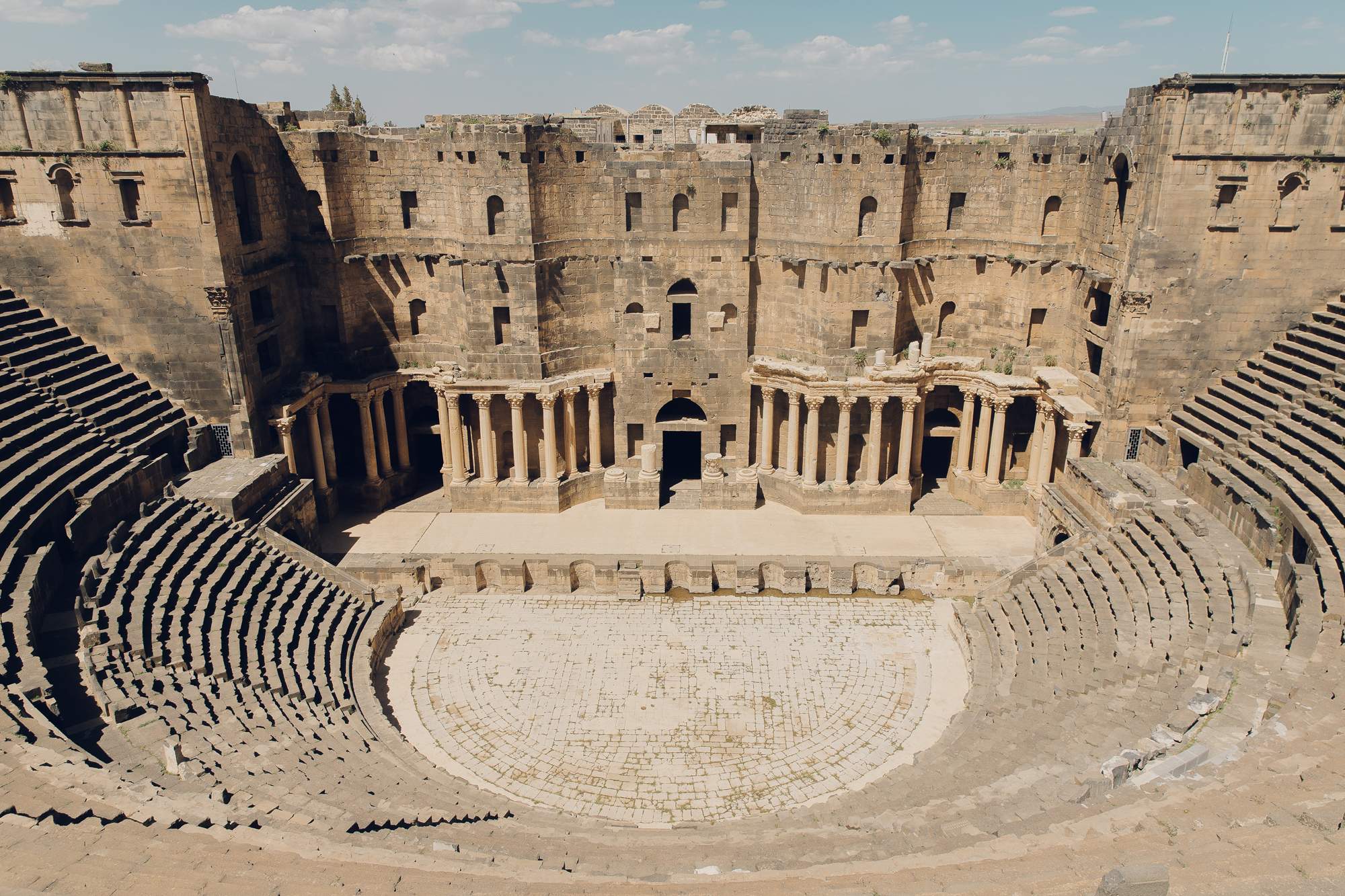
Roman amphitheatre in Bosra
As night draws in, Damascus sparks into life. In a cave bar tucked behind an old villa in the backstreets, young people gather to drink bottles of crisp Syrian-brewed Afamia beer and sing the songs of the Arab world’s old divas. “Life is impossibly hard,” says Sirina Alnabwani, a 25-year-old graphic designer and dance teacher. “We all have to work so many jobs just to get by. Where are the opportunities for our future? We’re Syrian and that’s a black mark now. No one wants us.”
Despite what this city’s young people have been through, the desire for life coursing through their veins is infectious. Alnabwani’s hips begin to sway to the music as she calls her friends onto the dance floor. They spin and stamp, ululating as the beat grows stronger and tossing their heads back. “People think that we have died here but we’re alive no matter what,” she says. “If we young people have learned one thing, it’s not to care what anyone thinks about us.”
Damascus feels sorrowful but secure. But as we leave the city the next morning the mood changes. The northern suburbs, infamous for their drawn-out rebellion and long under siege by the government, are all but gone. Mounds of dust coat a landscape that was once filled with homes and farms. “These people will never come back,” says an old man as he surveys the destruction. “There’s nothing to rebuild. The regime flattened it. What was it all for?”
Driving towards the southern city of Bosra, under government control after being wrested back from rebel forces, our guide grows tense. “The terrorists tried to beat us but they did not win,” she says, steely-faced. There is a clear lexicon for tours here. Every side except for the government is referred to as “terrorists”; there is no differentiation between al-Qaeda, Isis and the rebel groups that rose up against Assad’s forces. Any destruction is attributed to attacks by these “terrorists” on pro-government Syrians; the army and their allies shoulder no blame. Many of the younger generation here seem genuinely not to know or understand the difference. The road should only take an hour but at least 10 checkpoints stand between us and our destination. At each, smiling soldiers announce, “Welcome to Syria!” before carefully reviewing our names and passports, as well as the credentials of our guides. No foreigner can enter Syria without a personal sponsor, so guided tours such as the one we have attached ourselves to are the only way that most can see the country.
Among Bosra’s Roman ruins, shop signs lie scattered in streets littered with sheep droppings. As we pass walls still daubed in the green, white and black flag of the Syrian resistance, we’re instructed not to take pictures. “That is not the real Syrian flag,” we’re told. “It means nothing.”
“Twelve years of violence and fear,” says 22-year-old guide Tilka, as we wait at another checkpoint. She’s a Syriac from Qamishli, a northeastern city at the centre of a dispute between Kurdish forces and the Syrian government. Her eyes fill with tears as she looks out of the window. “That’s such a long time: half of our lives. It has been so hard.” Her childhood friend Gabriela has come to Damascus to train as a guide too; whenever they want to visit their home city, they face a 13-hour journey across some of the country’s still-active front lines. Gabriela’s first love is literature, she tells me as we walk the old streets. Virginia Woolf taught her what it is for a woman to forge her own path; Emily Dickinson’s poetry speaks to her because so much of it is left open to interpretation. But with Western imports so limited, she finds it difficult to get hold of the books that she craves to read.
We drive north to the Krak des Chevaliers, a fortress built by crusaders in the 11th century and recently occupied by rebel and jihadist forces. Inside, wildflowers poke from every crevice and fig trees crouch on the high ramparts. For residents of the nearby village of al-Husn, the land has not been so giving. “We have kept the castle safe and people are starting to come again,” says Rachad, who has been the castle’s caretaker for decades, his greying hair swept behind stark cheekbones. “But for us, there is nothing. I’ve only managed to rebuild one room of my house, where I live with my whole family.” As we climb down from the high walls, Haddad pulls me into the castle’s ancient chapel-turned-mosque. Covering her abundant curls with an embroidered shawl, she begins to sing a mournful Sufi prayer. “God, I never knew love before I knew you. When I close my eyes, I see no enemies. You protect me...”

Bartenders outside a bar disguised as a barbers’ shop in Damascus
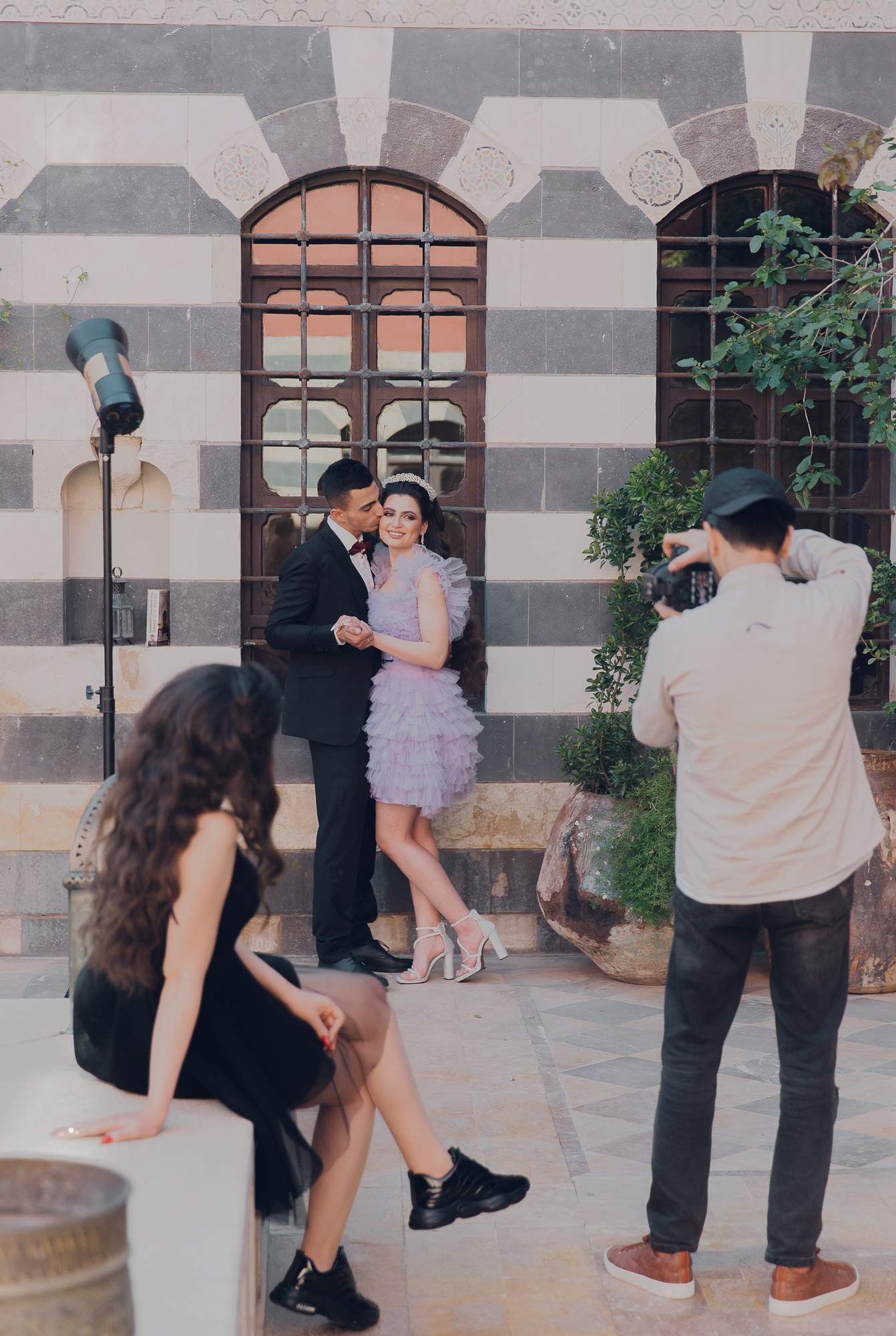
Love through a lens
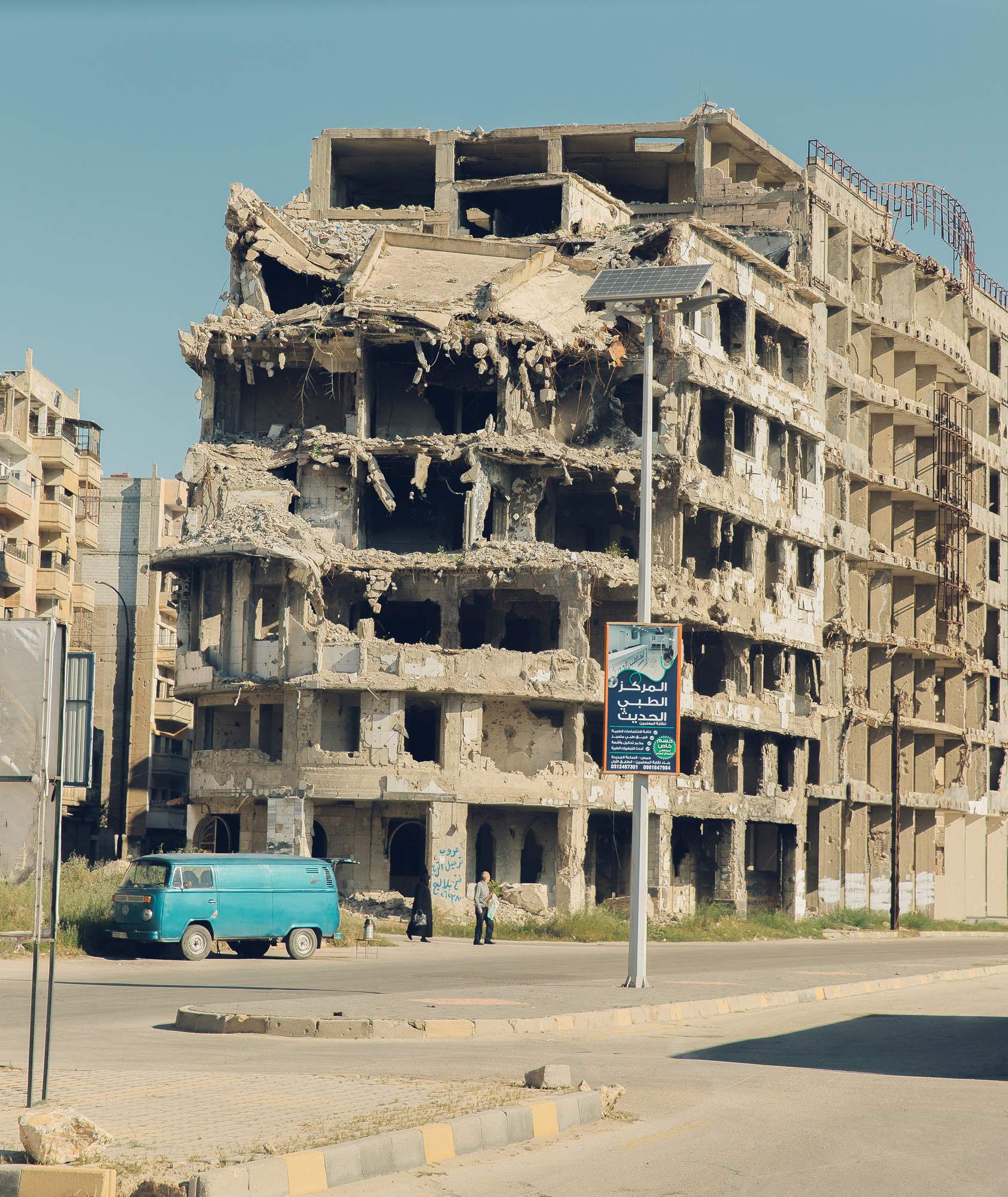
Building turned to rubble
The road to Palmyra promises even greater loss. This ancient town, which once thrived through trade and, later, tourism, sits desolate in the baking midday sun. The gate of its museum lies rusting on its hinges, the walls savaged by bullet holes. Inside, only a few treasures remain; the statues’ faces were hacked off by Isis fighters who captured the city in 2015. A picture of Khaled al-Asaad, the 82-year-old archaeologist who was publicly beheaded that year after refusing to disclose the location of hidden artefacts, is painted on a filing cabinet door that is propped up in the lobby. The ruins are a trace of their former glory: the magnificent temples of Bel and Baalshamin were levelled by dynamite, their proud columns and friezes reduced to rubble. Only the amphitheatre remains intact. A local man and his four-year-old daughter try to sell faded postcards in the dry desert heat but few now come this way.
Though depleted, these ancient marvels are what draw tourists to Syria today, despite the dangers. Bernardo Martinez, a Mexican architect from Monterrey, travelled to the country to explore its architectural heritage. Once here, he found the people equally stimulating. “Inspiration doesn’t just come from the architecture of ancient sites or modern buildings but also from the people, food, culture, colours, textures, fashion, religion, nature, music and even weather. Though Syria’s infrastructure is devastated, the soul of its culture and people is as strong as ever.”
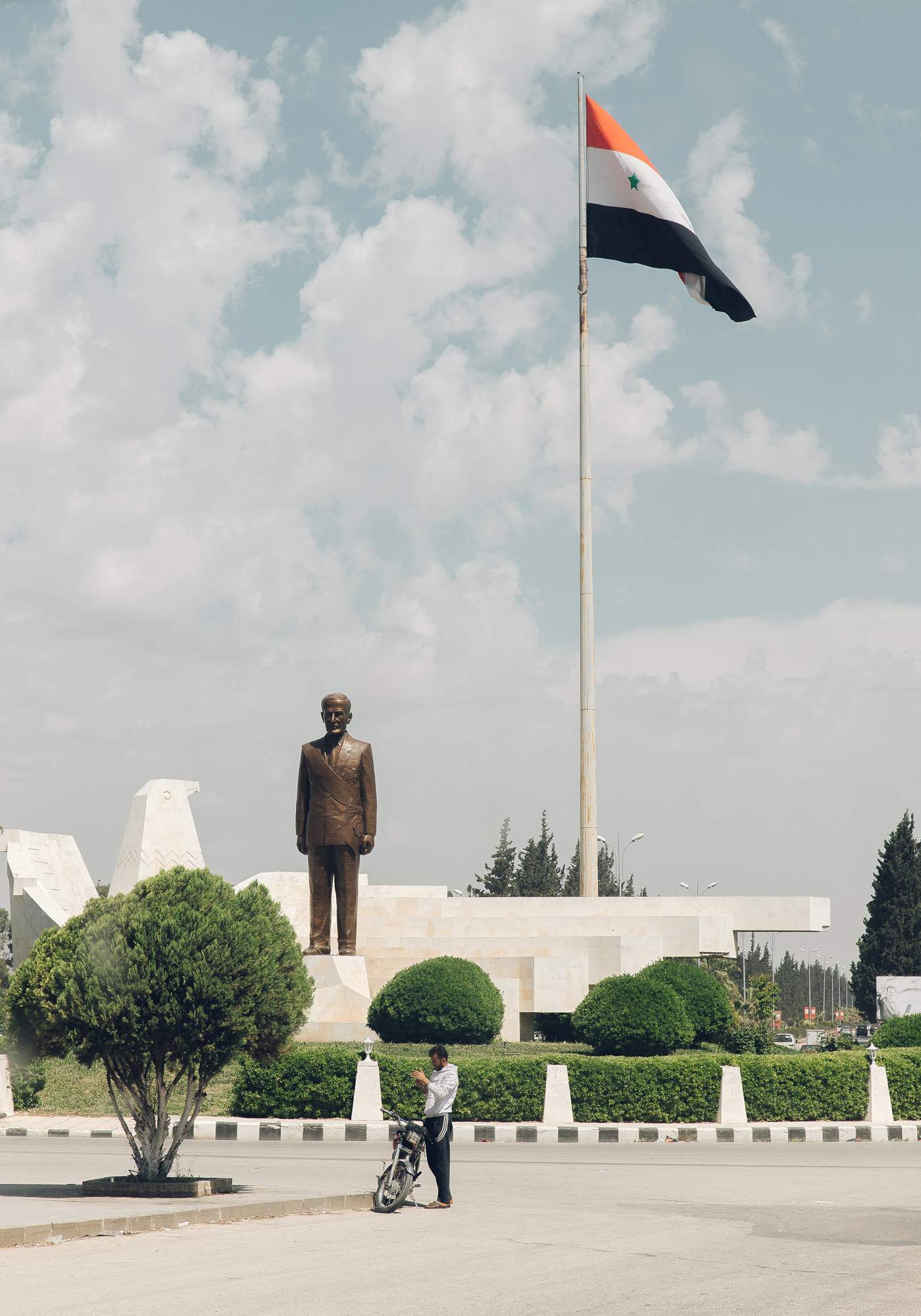
Statue of former president Hafez al-Assad in Hama
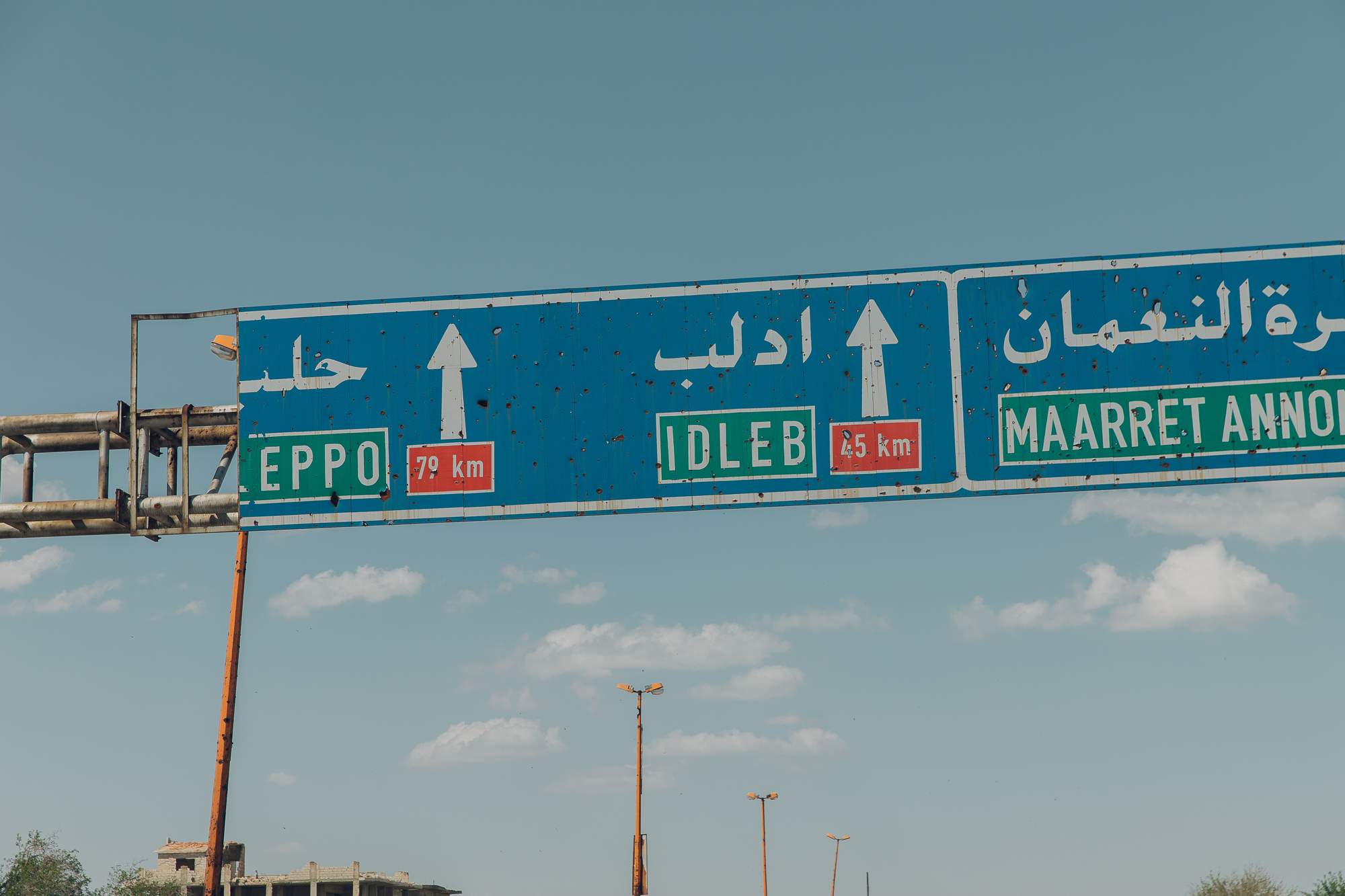
On the road towards Aleppo
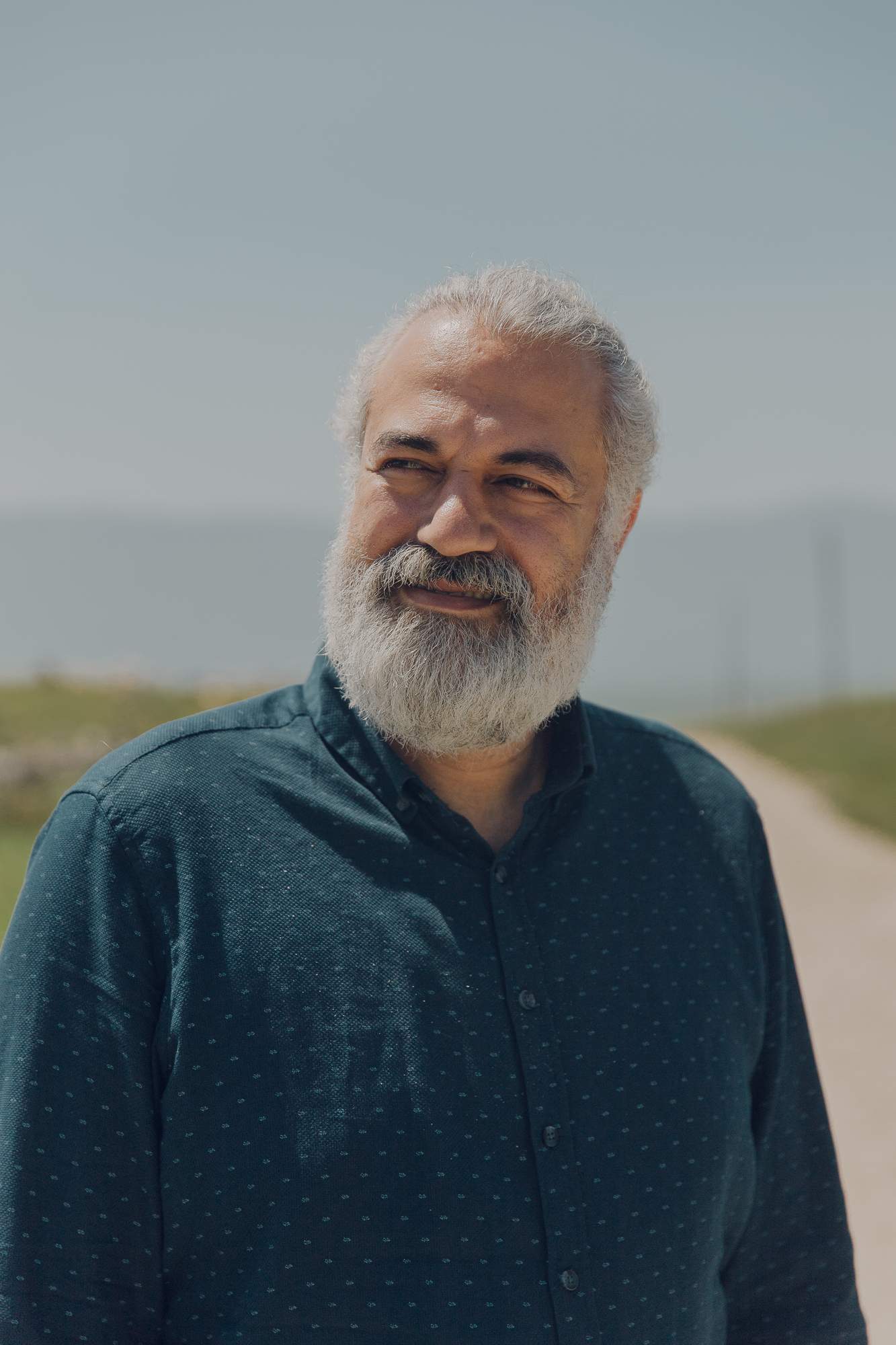
Fadi Assi, founder of Golden Team tour guides

Futures in the frame

Krak des Chevaliers, a medieval castle near the city of Homs
Michael Treichl, a German airport duty manager, first visited Syria 20 years ago. Now he is back to see the country that haunts his dreams. His jaw drops as he walks through the devastated old souks of Aleppo, every step kicking up thick dust. The 14th-century alleyways lie in ruins, weeds growing between piles of ancient stone. “This was once the most vibrant, the most alive place that I have ever been to,” he says. “Seeing it like this is unbearable.”
The reconstruction of Aleppo’s souks is under way but in February they were hit by another devastating blow, as the earthquakes that struck southern Turkey and northern Syria levelled the rebuilt section. “How much more can we take?” cries 27-year-old Aleppo resident Alissar Basmaji. “You think it’s beautiful now? You should have seen it before. This place was magical.” Like so many other young Syrians, Basmaji is working many jobs – including as a pianist, public relations manager and university lecturer – to survive. “When the war was at its worst, everyone left. But I want to do everything that I can to stay, to make a life here again.”
If the destruction in Aleppo comes as a jolt after the protected charms of Damascus, it is only a taste of what is to come. On the 200km drive to Homs, the true cost of the war is laid bare. Every town and village on this embattled front line has been laid to waste. No one lives in these burned-out shells any more, each former home a patchwork of shattered concrete and twisted metal. Army tanks are parked in apartment garages that once housed family sedans. Occasional lines of drying clothes slung from high apartment windows flag those who have refused to leave. Shepherds graze their sheep on central reservations; roadside merchants with crates of fresh cherries and strawberries pop up once every few kilometres, hoping to catch the occasional car. As we enter Khan Sheikhoun, the centre of some of the worst fighting, Assi gazes out of the window. The town is famous for its honey and pistachios but now the wildflowers that blanket the roadside stand lonely, the gentle buzz of bees wafting around them long gone. “We used to come camping here in the spring as the nuts were ripening,” says Assi wistfully. “Do you know how a pistachio tells you it’s ready? It pops. We would lie under the trees through the cool spring night and hear the nuts call their readiness, ping, ping. What a gentle life we lived.”
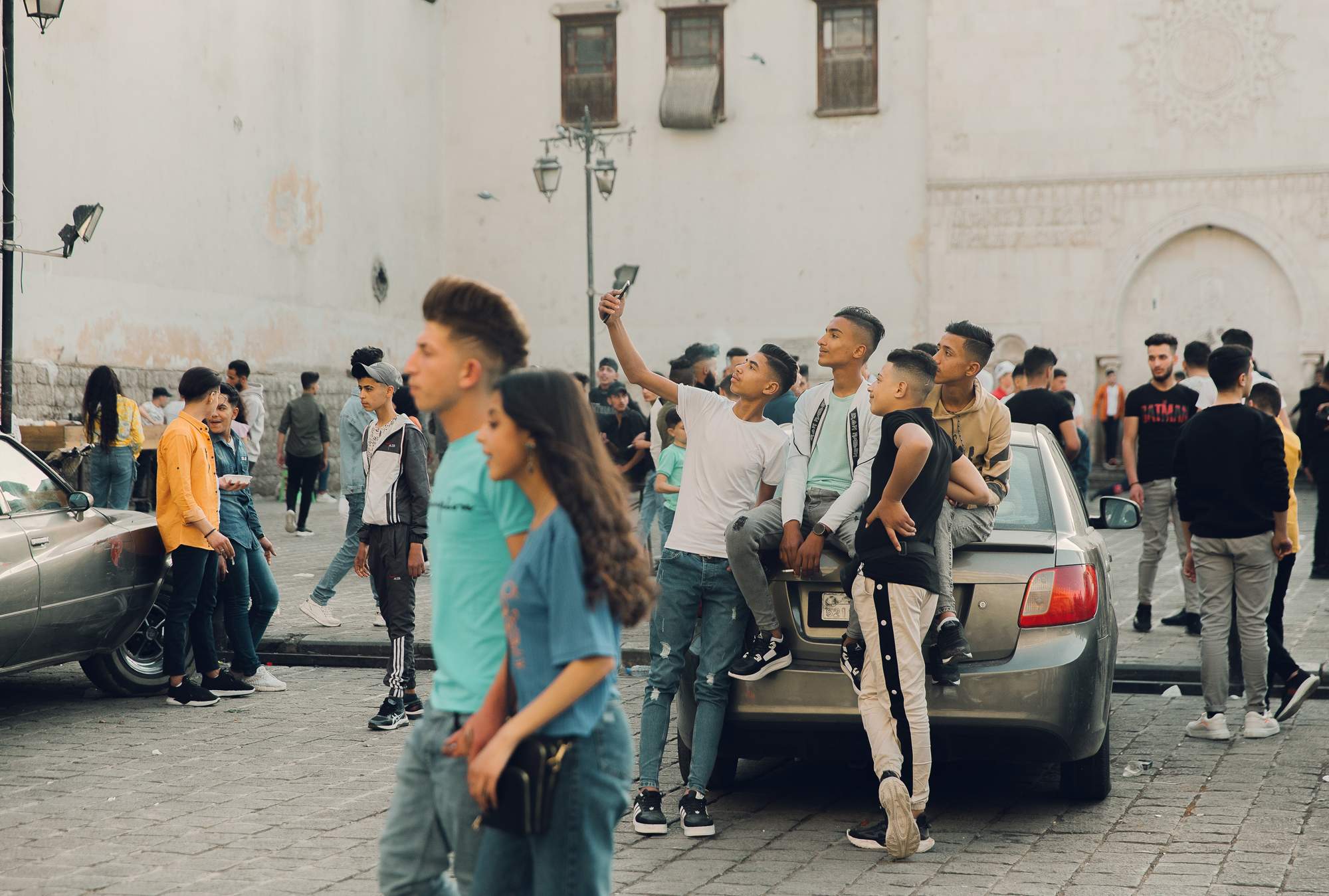
Young men amd women socialising in Damascus
In the central Syrian city of Hama, home to 12th- century water wheels that once powered the ancient settlement, the poverty is more extreme. Mothers in ragged clothes beg desperately for change as young couples eat ice cream in the sunshine and take selfies in the park. Children scream in delight as they hold diving competitions on the banks of the Orontes river. Yusuf, a teenager who, like his friends, has no school and no work, is picking ruby-red camellias to give his mother. He hands me one shyly, wishing me a happy Eid.
A significant sector of the international community advocates boycotting tourism to Syria, arguing that foreign currency entering the country would prop up a government responsible for the deaths and displacement of millions of its citizens. Others argue that such an approach only hurts civilians who are already struggling to survive. The country’s economy is at its lowest ebb, largely as a result of the devaluation of the Syrian pound. Before the war, syp50 bought $1 (€0.90); now you would need about syp7,000. Government salaries bring in less than €30 a month, barely enough to buy basic food staples, let alone pay rent and afford petrol, gas and generator fuel. Electricity functions for only a few hours a day and running a business is almost impossible as financial transactions are frozen, meaning that international banks will not send or receive money from Syria. Sanctions target many building materials because of their potential military use; that leaves millions of people without the resources to rebuild their homes, even if they could afford to do so. Despite temporary exemptions for specific humanitarian aid after the earthquake, the US has shown little willingness to lift existing sanctions; meanwhile, the EU imposed further measures on Assad’s government in late April.
People are forced to use workarounds to get foreign currency into the country. A Kurdish hairdresser in Geneva, for instance, might serve as a drop-off for payments; he’ll then call a contact in Syria who will distribute funds at the other end. Sometimes, it’s as simple as handing a stack of notes and desperately needed supplies such as baby milk and heart medicine to a taxi driver crossing the border, along with instructions about where to deliver them. But these are crisis measures, not long-term solutions. “It’s clear that while sanctions are officially targeting the Syrian government and its institutions, they are indirectly affecting the whole population,” says Syrian economist Joseph Daher, an affiliate professor at the European University Institute in Florence. “The objective of sanctions is behavioural change and popular pressure for reform but the opposite is happening. Economic pressure is increasing and there is no political will for change. People are just focusing on surviving or trying to leave.”
In recent months wealthy Arab states such as the uae, Saudi Arabia and Egypt have renewed ties with Assad’s government. Besides pleading with friendly nations to reconsider, the US and its allies can do little to turn the tide as it becomes increasingly clear that Syria’s president is here to stay.
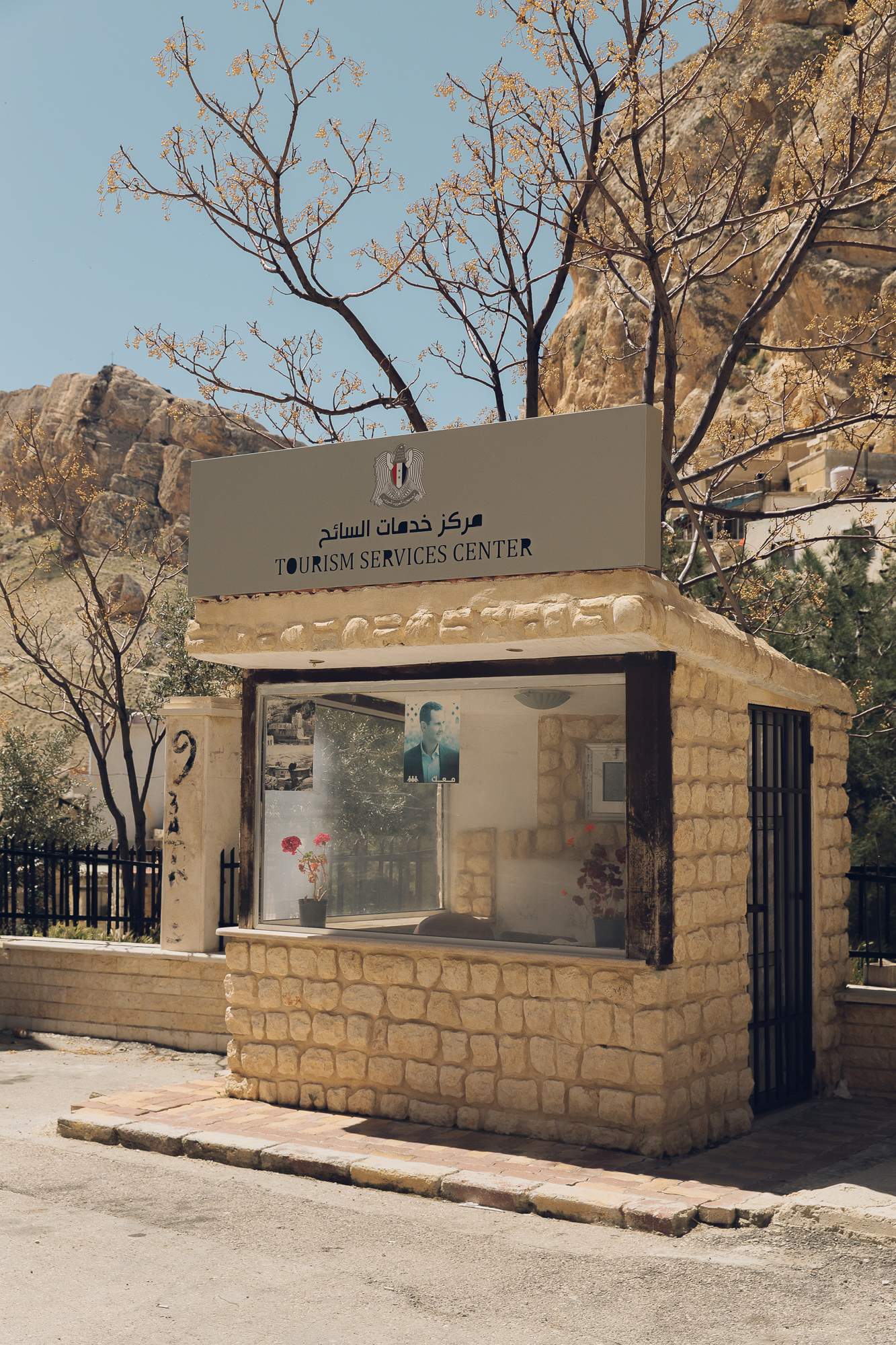
Adventure travellers are returning to Syria but tourism is still low
Rik Brinks runs Cultureroad, a Netherlands-based adventure-travel company that has brought tours to Syria since early 2022. Brinks says that Syria is one of his most popular destinations: interest has shot up this year, attracting a mix of adventure travellers and people with a specific connection to the country. “Their first question is, ‘Is it safe?’” says Brinks. “We want to show them a different side. Syrians fall in love, have families, live the same lives as we live. Visitors say that their trips are amazing and that’s mostly down to the people.” For Brinks, arranging tours to Syria has been easier than some of his other challenging destinations because the tourism infrastructure and knowledge were in place before the war. But it has not been without its challenges. The biggest hurdle is visas, as every traveller needs individual security screening and clearance from the government. Brinks believes that avoiding tourism to Syria to punish its leaders is misguided. “The people don’t choose their government,” he says. “Only about 2 per cent of our costs go to the state, for permits. Everything else goes to the people here and their businesses and, in this economic climate, every meal at a restaurant helps.”
Homs, Assi’s home district, is as beautiful as it is tragic. The wild, rolling fields of countryside seem to vibrate with nature’s riches, the daily rhythms of agricultural life now set against a backdrop of destruction. The northern suburbs lie in ruins, a haunting reminder of the communities that once lived there.
In a four-room apartment decked out with the low-slung, brightly patterned sofas that are particular to Arab hospitality, Assi’s mother, Asmahan, has prepared a feast. Plump chickpeas marinated in olive oil and topped with boiled chicken and bulgur wheat bump against platters of fresh peas and grilled lamb. Shish barak, meat-filled pastry parcels served with an acid-sharp yoghurt sauce, is the star of the show. We wash down plate after plate with arak, aniseed liqueur hand-distilled from grapes grown on the farm of Assi’s father, Nadim. Every meal in Syria is a delight.
After dinner, we sip on sweet tea as Assi’s cheeky eight-year-old daughter, named Syria, proudly lays out her Monopoly board, an edition that features Damascus’s best-known streets. The prices on the bright squares hark back to a time when a stack of Syrian pounds could buy a home (or hotel), not just a can of soda.
The following day, as I walk down the unlit streets of Homs’ old town, fat drops of rain begin to fall – a relief after a series of sweltering days. Looking for shelter, I see a wooden door propped open, its delicate brass reliefs sparkling as the water lands. Inside there is a hidden palace. The carefully laid arms of ancient wood-beam ceilings swing out to meet traditional striped, black-and-white stone walls, each bearing a series of geometric patterns.
Across the fountain-laden courtyard, the same stones lie scattered in piles – the back half of what was once Homs’ grandest restaurant, Beit al-Agha, now in ruins. Rain falls on a UN tarpaulin strung over the tile floor, beneath which hangs a single battery-powered bulb. It gives just enough light for the fierce backgammon game unfolding between Abu Ghadi and Abu Georges.
As I sit down to watch, I am handed a scalding cup of thick, black cardamom coffee. They have played this way every night for four or five years now, their friend Imad tells me, hunched over a towering ashtray that he fills from an ever-replenished cigarette at the corner of his mouth. With no electricity at home and no work, they meet to talk of the old days and use what public spaces they have left.
Imad used to build stone houses such as this. His friend Abu Ghadi was a plumber. With no money for reconstruction, they have all the skills that their country needs but none of the materials. Still, they have hope. Imad sweeps his greying hair from his forehead, heavily lined through years of grief, as he looks around the battered beauty of the ruined palace.
“We will rebuild our Syria – we have no other choice,” the stone mason vows determinedly. “Step by step, stone by stone, we’ll get there.”
Fractured state
In January 2011, as Syria erupted in protest just a few weeks into the Arab Spring, most predicted that Bashar al-Assad, seemingly the weakest of the Middle East’s dictators, would easily fall. Even after a murderous response from the state, most of Syria’s neighbours were preparing for life after Assad. As the revolution became a civil war, myriad armed factions entered the fray, all with their own foreign sponsors. Kurdish forces, with the assistance of their compatriots in Iraq, quickly established a redoubt in the north. Meanwhile, in the large cities of Homs and Aleppo, the Syrian Interim Government, an alliance of pro-democratic opposition forces, dug in. What came next shocked the world.
Assad, the awkward second son of former president Hafez al-Assad who had only become heir apparent after the death of his elder brother, proved himself more than callous enough to wage a brutal civil war. His forces bombed and gassed opposition towns and cities, displacing millions of Syrians and causing a European migration crisis. Amid the chaos, Isis, an armed group with a medieval regard for human life, declared a bloody caliphate in eastern Syria. Though the US and its allies co-operated to neutralise its threat, they stopped short of taking the fight to Assad.
Into this vacuum stepped Vladimir Putin. In September 2015 he deployed the Russian military to help Assad reassert control. Under Putin’s aegis, Syria’s president stepped up the bombing of opposition cities and the mass murder of civilians. Today, ancient cities have been reduced to rubble and Syria has lost between a third and half of its pre-war population. Recent estimates put the war’s death toll at about 600,000, including more than 300,000 civilians. At least 14 million people have been displaced and about half of those have left the country. Assad is now in control of three quarters of the nation. In May the Arab League readmitted Syria 12 years after it had been suspended.


